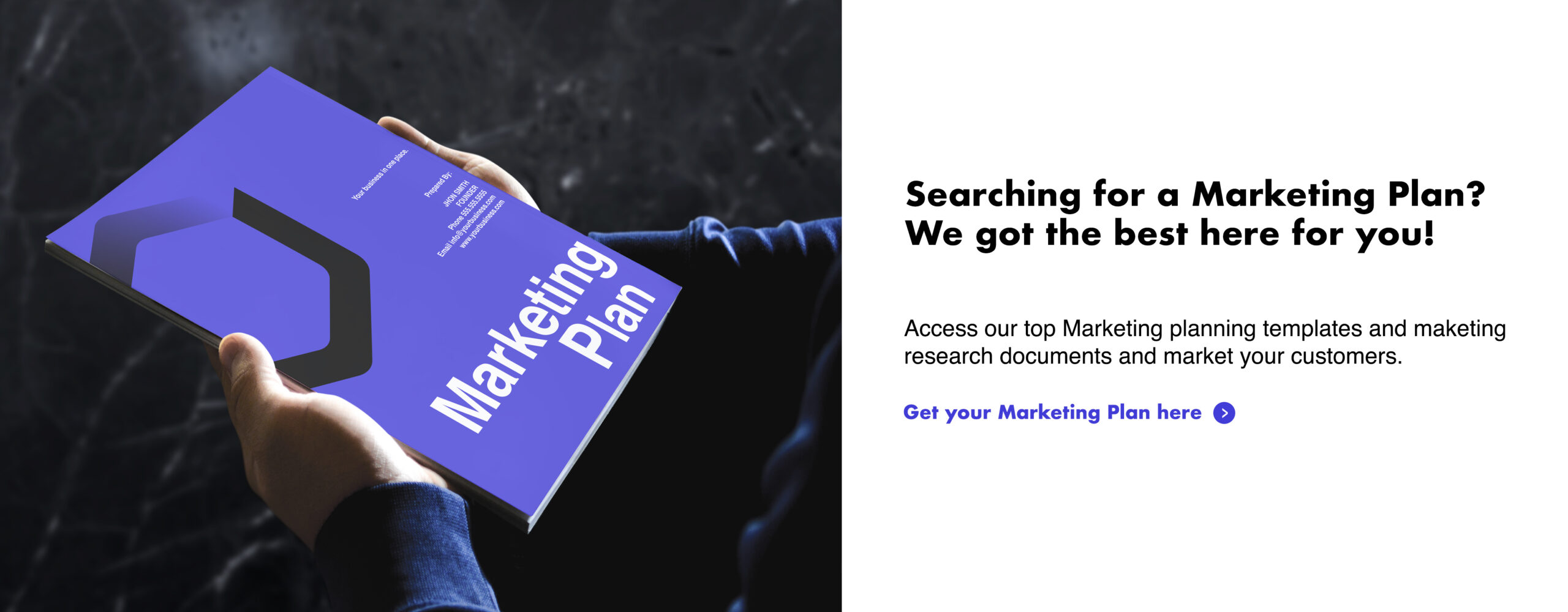
Marketing is an often misunderstood profession. Peers often stereotype marketing with massive budgets, loosey-goosey timelines, haphazard tactics, high-profile influencers, and Snapchat filters. In reality, modern marketing plans are more complex and orchestrated than a World Cup-winning German football team.
Businesses have big goals to hit and fine margins to walk—and they need realistic, yet imaginative, marketing plans to make it happen. Sure, bigger companies can spend all willy-nilly hiring Taylor Swift for a commercial op and dropping a quarter million on Facebook advertising, but small businesses and startups have to get downright strategic with every dollar they spend.
If your business is trying to stretch every penny, you’ve come to the right place. This article will show you how to create a marketing plan in 2021 that actually works with a down-to-earth budget. We’ve included step-by-step actions, outlines, examples, and more to give you everything you need to take an idea to the market with laser precision.
What Is a Marketing Plan?
A marketing plan is a documented roadmap for how you plan to drive awareness, sales, signups, attendance, or other marketing initiatives. It outlines your KPIs, budget, and timeline, dictating everything from the critical milestones to the nitty-gritty to-do items.
Marketing plans come in all shapes and sizes. You could build an overarching marketing plan to document and guide your entire department’s annual goals and strategies for the upcoming year. Or you might create a marketing plan detailing the launch strategy for the brand-new product release coming out next quarter. Big plans can even include small plans, just like an adorable collection of Russian nesting dolls.
Plans can be short, long, fat, or thin—just remember what your plan is trying to accomplish. If you’re trying to pitch an idea to a team of venture capitalists or a local bank, you might need a chunky document with accompanying spreadsheets and financial figures. However, if you’re trying to communicate the plan to your marketing team leads, you’ll want to skip straight to the point with tactics, deadlines, and deliverables.
Regardless of your use case, the next section will give you the building blocks you need to create a marketing plan that works.
How to Create a Marketing Plan
This section will show you the 6-step process of creating a marketing plan. Plans are fluid and versatile, so we don’t recommend filling out one of these with pen and paper—get your eraser ready because a marketing plan is never perfect from the get-go.
Here’s an overview of the 6-step process:
- Establish Your Marketing Goal
- Identify Your Audience
- Set Your Marketing Budget
- Determine Your Deadline(s)
- Pick Your Marketing Channels and Tactics
- Outline the To-Do List and Make Assignments
Don’t worry too much about making it all nice and pretty right now. Later, you can use our provided marketing outline to copy, paste, and format a more articulated version for widespread distribution. For now, just focus on hashing out each section and answering the thought-provoking questions.
1. Establish Your Marketing Goal
Define exactly what you’re trying to achieve. Do you want to drive more sales? How much? What about recurring customers? How many? Do you need to increase brand awareness? To whom and by how much?
Work out the details of what you want to accomplish, why, and how you’re going to measure it. Establish your KPIs early on to measure the success of your marketing campaign. You’ll refer to these numbers throughout the rest of your marketing plan, so get specific.
For example, how many website visitors you’re trying to drive will affect your marketing budget, deadlines, and tactics. And if you’re targeting a specific demographic, you may need to engage different marketing teams to use the appropriate channels and messaging.
Fine-tune your marketing goal so that you can communicate it simply in a single sentence. For example: “The goal is to drive 25,000 key decision-makers to the new product page by the end of October with a limited marketing budget of $75,000.”
2. Identify Your Audience
Explain who this campaign is targeting. If you’ve already built out your buyer personas, you’ll just plug in the persona appropriate to this campaign. However, if this is your first time thinking long and hard about your target audience, really get to know the person you’re marketing to.
Depending on your product, industry, and market, you’ll want to know demographics like:
- Job title
- Age
- Sex
- Marital status
- Location
- Income
- Employer
- And more
These details help you identify a broad audience, but you’ll want to narrow it down with psychographics.
Psychographics dig deeper. They cover your audience’s:
- Hobbies
- Interests
- Influencers
- Shopping behaviors
- Values
- Beliefs
- And more
Demographics explain the “who,” while psychographics explains the “why.”
Think about if you were trying to sell a baseball glove. How you market that glove is going to be very different depending on the buyer. Are your messaging and channels targeting a college athlete, recreational youngster, mom, dad, or low-income family? It’s hard to know what to say and how to say it unless you know who you’re talking to.
Don’t just gloss over this section. Without a target audience, you’ll be blindly throwing darts at a board—sure, some plans might work out, but it’ll come down less to strategy and more to sheer luck. A target audience and replicable formula make your success a science and not a game of Russian roulette.
3. Set Your Marketing Budget
Marketing plans need budget constraints. Without a cap, plans could hypothetically include:
- 60-second Super Bowl commercial
- Cristiano Ronaldo as a celebrity endorser
- Billboard advertisements along the entirety of Route 66
For most startups, that’s just not a possibility.
And it’s not where the magic happens. Powerful marketing plans turn tiny marketing budgets into impressive ROI. They prioritize the right channels, messaging, and tactics to stretch every dollar to the max.
Decide beforehand how much budget you’ll need to allocate to meet the goals you set in Step 1. When push comes to shove, you may need to throw additional money at the campaign later to get it across the finish line, but stay strong and do your best to create a marketing plan that works with the budget constraints.
4. Determine Your Deadline(s)
Deadlines create the boundaries of your marketing campaign—you can’t have a plan without them. No deadlines mean there’s a never-ending period to achieve your objective, and it’s probably not a good idea to have a 20-year free pass to accomplish that sales goal you set.
Set your deadline. Be realistic, but also be ambitious. The faster you achieve this goal, the faster you can move on to the next one—and each progressive goal should be moving your business forward.
Establish the final deadline for achieving your primary KPI. Then, set the necessary milestones along the journey. For example, you might set milestones for launching different aspects of your campaign, such as hosting 4 webinars, publishing 10 supporting blog posts, or earning a callout in 2 prime news outlets.
Finally, set the start date for when you’ll need to get the ball rolling to meet your deadlines. Don’t assume it’s ASAP—you might have a few weeks to get your ducks in a row instead of immediately heading off into a chaotic marketing battle.
5. Pick Your Marketing Channels and Tactics
This is arguably the funniest part of creating a marketing plan. This is the step where you get to choose the channels, tactics, and deliverables. The right channels and tactics will vary depending on your audience and product or service, but here are the most popular ones to consider:
- Email Marketing: Email marketing is one of the tried-and-true tactics of the digital marketing world. It generates an average ROI of $40 for every $1 invested—you can’t get much more bang for your buck than that. (Check out our complete email masterclass to learn how to conquer this lucrative channel.)
- Social Media Marketing: Whether you’re running organic strategies or targeted paid campaigns, social media marketing is an excellent modern-day tactic for reaching consumers where they’re most comfortable: Instagram, Facebook, Snapchat, YouTube, or TikTok.
- PPC Marketing: Pay-per-click (PPC) marketing lets you run advertising campaigns on search engine pages and other websites across the internet. It’s a competitive way to get your content in front of the right eyeballs.
- Content Marketing: Content marketing paired with a solid search engine optimization (SEO) strategy is a long-term tactic that can drive organic traffic (read: free) to your website for years to come.
And do you know what all these channels have in common? They each give you the ability to monitor your results and track your progress to prove if a channel is worth your time and money. Unlike traditional outbound advertising and its estimated impressions and influence, you know exactly what you’re getting with these digital marketing strategies.
6. Outline the To-Do List and Make Assignments
Here’s where you get into the nitty-gritty of your marketing plan. Step 6 is where you’ll outline everything that needs to get done:
- Launch meeting
- Recurring meetings and syncs
- Messaging
- Creative assets
- Promotional channels
- Post-mortems
And that’s just the start. Outline everything that needs to happen to make your plan a reality. Once you know what needs to happen, it’s time to start making assignments. Someone needs to be responsible for every deliverable.
Here’s where you may run into roadblocks. You may discover that your creative team is overwhelmed and won’t be able to handle the creative requests until later, or you may find that other email campaigns or social media advertisements are the top priority.
If that’s the case, go back to Step 4 to revisit your timeline. Make adjustments to ensure there’s bandwidth available to make your marketing plan a reality.
Marketing Plan Outline (Copy/Paste)
Marketing Plan Outline: [Name of Project]
Marketing Goal
[Identify what you’re trying to achieve. Include KPIs, deadlines, and how this ties back to overall company goals]
Target Audience
[Describe the audience persona(s) in enough detail that even your new freelancer could understand after a quick read]
Marketing Budget
[Highlight how much budget has been set aside for this campaign]
Timeline
[Break down start dates, end dates, crucial deadlines, and important milestones]
Marketing Tactics
[Include the relevant channels and tactics you plan to include as part of this campaign]
Responsibilities and Assignments
[Add who’s going to be helping with what and write down their deliverables]
Marketing Plan Example (Filled Out)
Here’s a fake content marketing plan example for a fictitious shoe company.
Marketing Plan Outline: [Project Zeus Running Collection]
Marketing Goal
Drive $200,000 in sales for the new Zeus running collection within the first 4 months of launch day.
Target Audience
The primary audience is 35 to 50-year-old male recreational runners who tend to run 30-40 miles a week at an average page of 8:00-10:00 minutes per mile. They’re not overly competitive, but they like to race 5K and 10K races occasionally throughout the year and are always trying to beat their personal best. Many have experienced mild injuries over the last few years that the Zeus Running Collection can help alleviate.
Marketing Budget
We have a budget of $40,000 for the initial launch period. If we can prove out the Zeus Running Collection, we’ll allocate an additional budget after the first 4 months.
Timeline
- Launch Day: June 1
- Marketing Assets Ready to Go: May 28
- Pre-Launch Teaser: May 24
- Creative Assets Finished: May 21
- Product Beta Tester Reviews Submitted: May 10
- Written Content Creation Period: April 12 – May 7
- Enlist Beta Testers: April 12
- Project Kickoff Meeting: April 5
Marketing Tactics
- Social Media Marketing: Target runners on Instagram and Facebook with paid ads featuring our endorsed runner racing in the shoe.
- Email Marketing: Email existing customers with a 15% off discount code on the new Zeus Running Collection. Email prospects with a link to the product breakdown page with a code for free shipping.
Responsibilities and Assignments
- Lizzy K: Creative assets
- Mark B: Blog post announcement + product page
- Spencer S: Beta tester outreach
- Larry G: Email and social media marketing campaigns
- Carly M: Project manager
Plan It Out—Make It Happen
Every great campaign starts with an even better plan. Don’t leave your startup’s success up to chance—give it all the thought and attention you can.
With the right plan in place, you won’t be crossing your fingers on launch day or during the quarterly review. You’ll be sitting confidently, knowing that everything is running according to plan.
Need a high-level plan for your startup? We got you covered. Check our Marketing Plan template ready to fill and print!
SOURCE: foundr.com

























